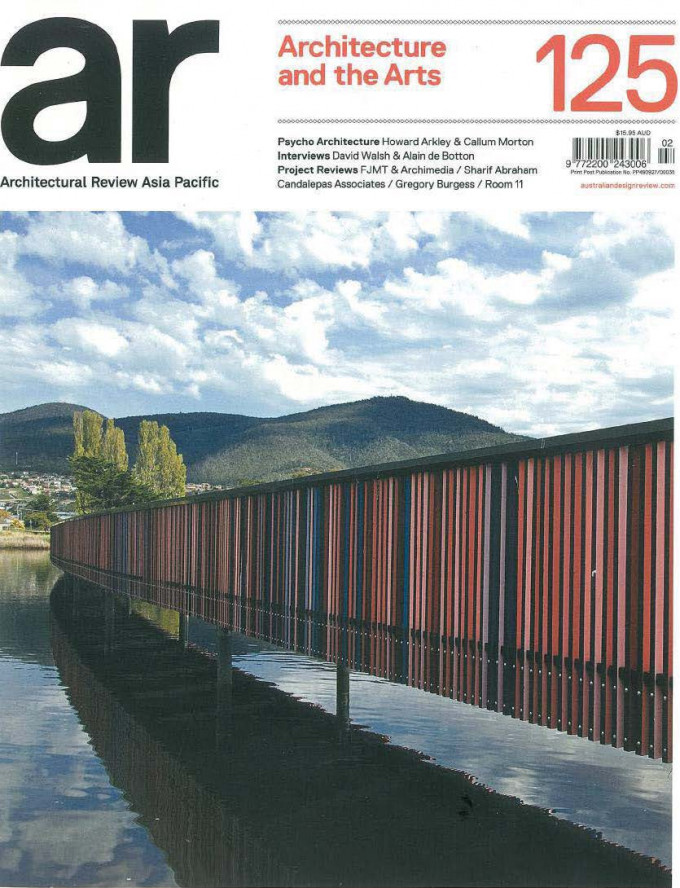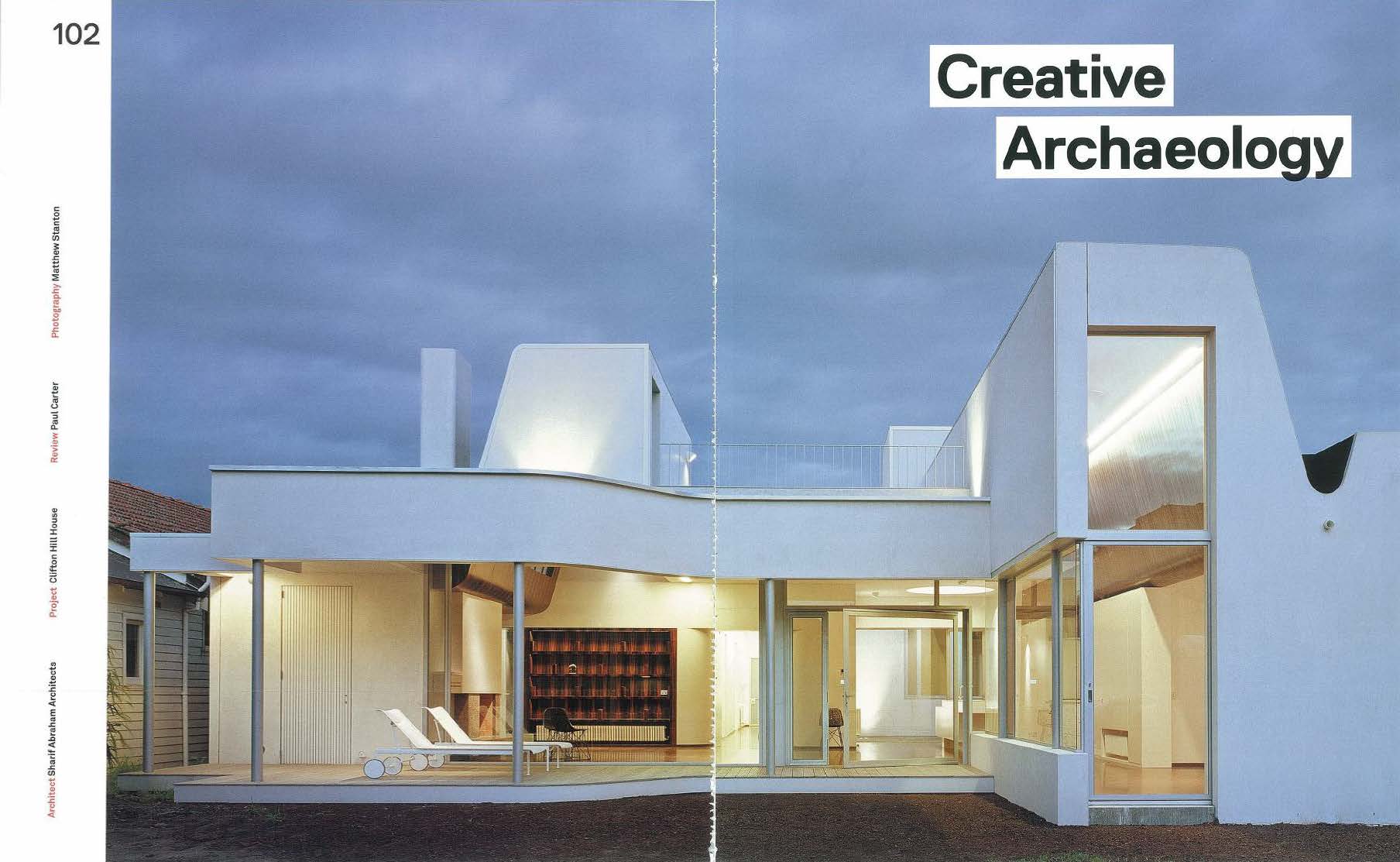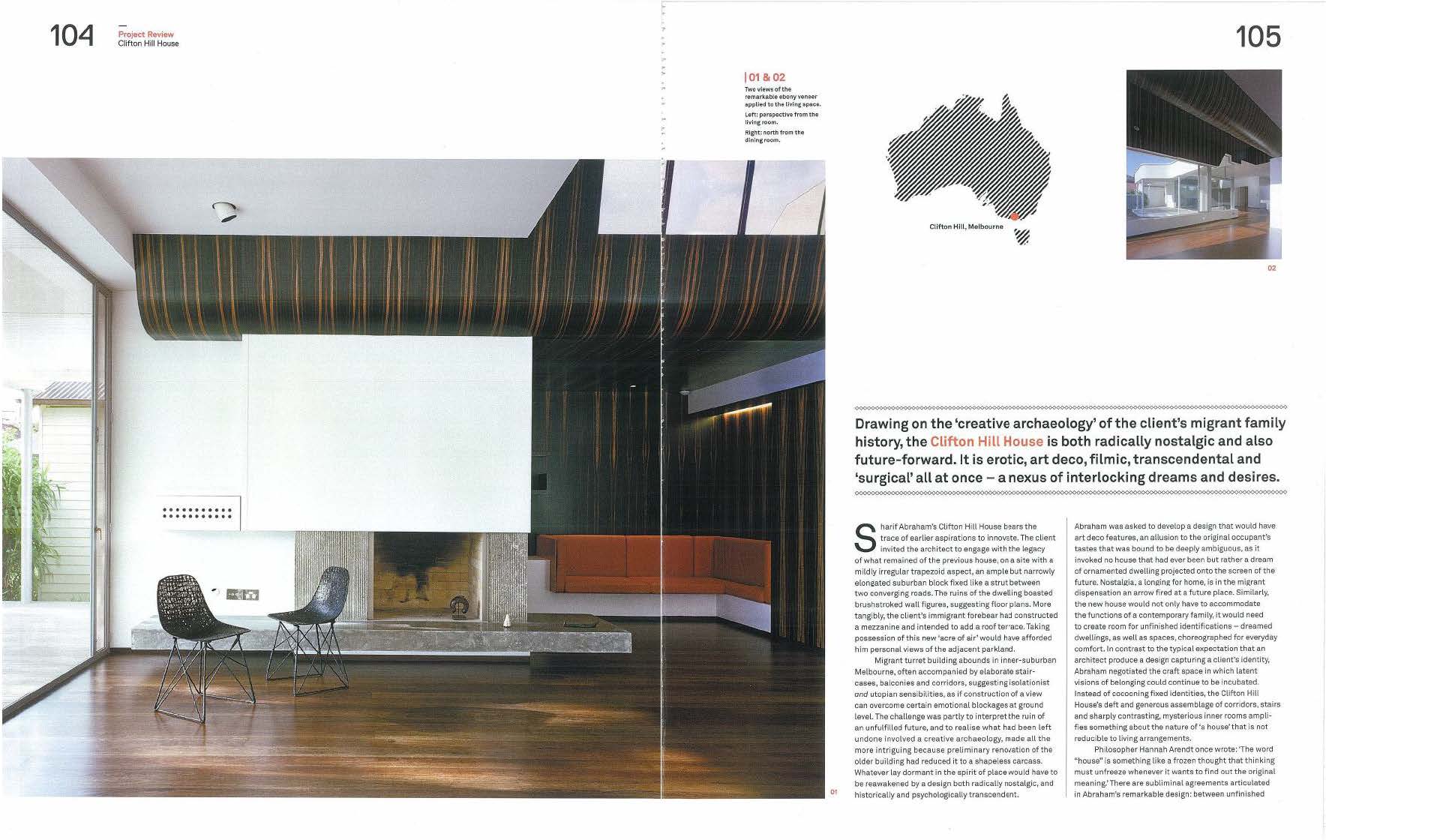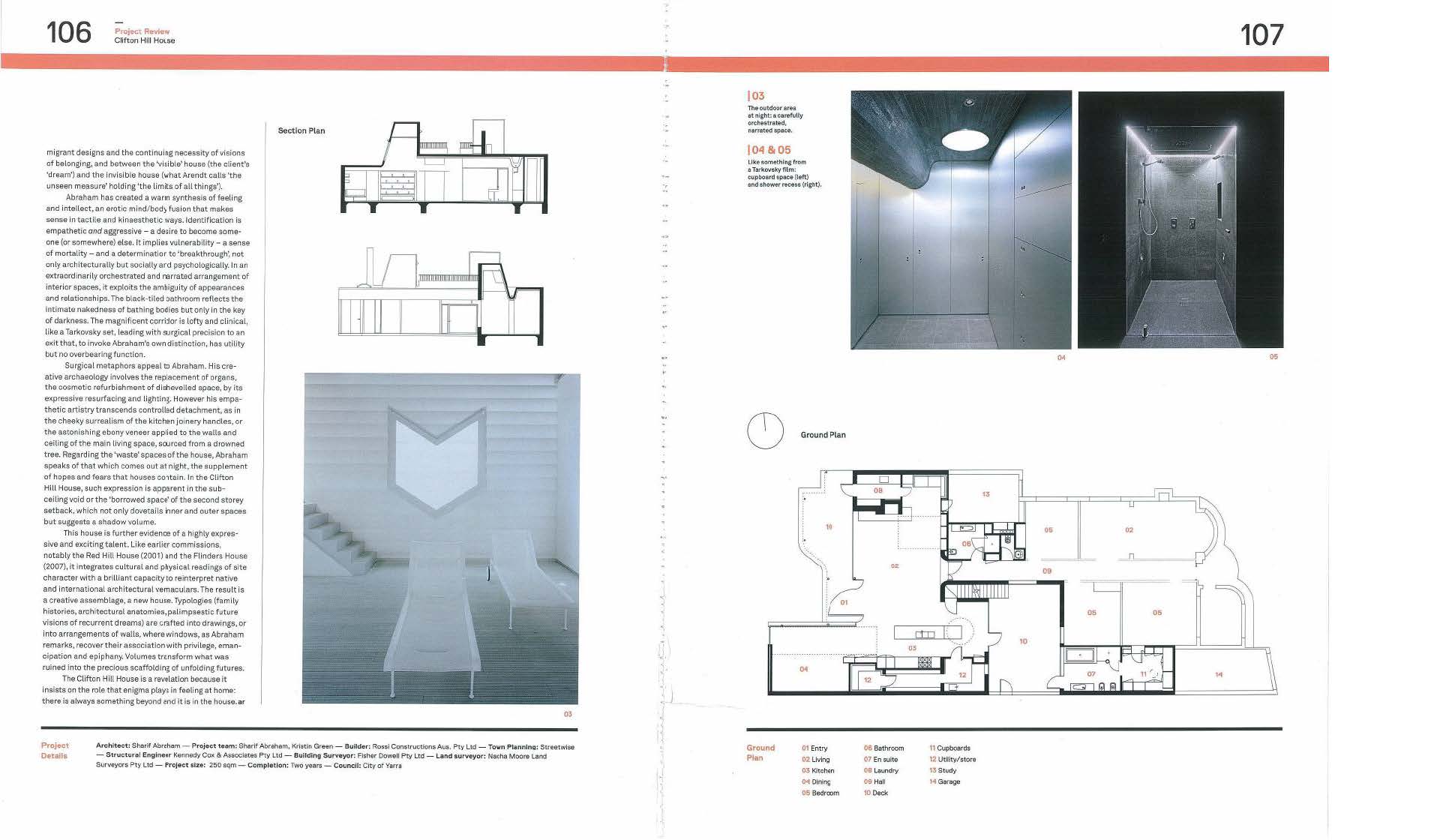
Clifton Hill House Review
Text extract Review by Paul Carter- AR 125

Abraham’s Clifton Hill House is new partly because it bears the trace of earlier aspirations to innovate. The client invited the architect to engage with the legacy of what remained of the previous house. Perhaps the mildly irregular trapezoid aspect of the site - an ample but narrowly elongated suburban block fixed like a strut between two converging roads - had encouraged the client’s great-uncle, the house’s original owner, to embark on further deformations and renewals. The ruins of the future dwelling that Abraham had to work on featured brushstroked wall figures that suggested floorplans; more tangibly, the client’s immigrant forebear had constructed a mezzanine, as well as intending to add a roof terrace. Taking possession of this new acre of air would have afforded him personal views of the adjacent park land. Instances of migrant turret-building, often accompanied by elaborate staircases, balconies and corridors, abound in Melbourne’s inner suburbs. They suggest sensibilities at once isolationist and utopian, as if the construction of a view can overcome certain emotional blockages at ground level. In any case, coming to this commission Abraham recognized that the challenge was in part to interpret the ruin of an unfulfilled future. To realize what had been left undone involved a creative archaeology, made all the more intriguing because preliminary renovation of the older building had reduced it to a shapeless carcase, where whatever lay dormant in the spirit of place would have to be reawakened by means of a design at once radically nostalgic and historically and psychologically transcendent.

Abraham was asked to develop a design that would have art deco features. However, this allusion to the original occupant’s tastes was bound to be deeply ambiguous, as it invoked no house that had ever been but rather a dream of ornamented dwelling projected onto the screen of the future. Nostalgia, a longing for home, is, in the migrant dispensation, an arrow fired at a future place. Similarly, the new house would not only have to accommodate the functions of a contemporary family: it would need to create room for unfinished identifications – dreamed dwellings as well as spaces choreographed for everyday comfort. In contrast with the typical expectation that the architect will produce a design that captures the client’s identity, Abraham negotiated the craft space in which latent visions of belonging could continue to be incubated: instead of cocooning fixed identities, the Clifton Hill House’s deft and generous assemblage of corridors, stairs and sharply contrasting mysterious inner rooms amplifies and renders concrete something about the nature of ‘house’ that eludes reduction to living arrangements. The philosopher Hannah Arendt once wrote, ‘The word “house” is something like a frozen thought that thinking must unfreeze whenever it want to find out the original meaning.’ In the subliminal agreements articulated in his remarkable design – agreements between unfinished migrant designs and the continuing necessity of visions of belonging, between the ‘visible’ house that realises the client’s ‘dream’ and the invisible house understood as what Arendt calls ‘the unseen measure’ holding ‘the limits of all things’ - Abraham has created a brilliant and warm synthesis of feeling and intellect, an erotic fusion of mind and body that makes sense in tactile and kinesthetic ways as well as spiritually.
Identification is both empathetic and aggressive. It involves a desire to become someone (or somewhere) else. It implies vulnerability – a sense of mortality – and a determination to ‘break through’, not only architecturally but socially and psychologically. It implies pragmatism and perhaps a receptivity to prostheses of various kinds (the roof terrace, for example) that express a defiance of the contingency of life and the containments of fate. Above all, at least in Abraham’s extraordinarily orchestrated and narrated arrangement of interior spaces, it exploits the ambiguity of appearances and relationships: hence Abraham’s black-tiled bathroom is designed to reflect the intimate nakedness of bathing bodies but only in the key of darkness; or again, the magnificent corridor, lofty, clinical – it reminded me of a detail of a Tarkovsky set – leads with surgical precision to an exit that (to invoke Abraham’s own distinction) has utility but no overbearing function. Surgical metaphors appeal to Abraham: his creative archaeology involves the replacement of organs, the cosmetic refurbishment of disheveled space (by its expressive resurfacing and lighting). However, his empathetic artistry transcends this kind of controlled detachment: the cheeky surrealism of the kitchen joinery handles, or the astonishing ebony veneer applied to the walls and ceiling of the main living space – sourced from a drowned tree – the grain of the veneer progressively widens from floor to ceiling, staging a kind of spiritual expansion – these touches are improvised and correspond, one supposes, to fruitful fantasies of Abraham’s own commitment to encouraging forms of sociability that cherish ornament. Talking about the ‘waste’ spaces of the Clifton Hill House – the sub-ceiling void, or the ‘borrowed space’, of the second story setback, which not only dovetails inner and outer spaces but suggests a shadow volume – Abraham speaks of that which comes out at night, the supplement of hopes and fears that houses also house.

Abraham’s latest work is further evidence of a highly-original, expressive and exciting talent. Like earlier commissions, notably the Red Hill House (2001) and the Flinders House (2007), it integrates cultural and physical readings of site character with a brilliant capacity to reinterpret native and international architectural vernaculars. The result, however, is a creative assemblage, a new house where typologies (family histories, architectural anatomies and the palimpsestic future visions of recurrent dreams) are crafted into drawings, arrangements of walls – where windows, as Abraham remarks, recover their association with privilege, emancipation and epiphany – and volumes, that transform what was ruined into the precious scaffolding of unfolding futures. The Clifton Hill House is a revelation because it insists on the role the enigmatic plays in feeling at home: there is always something beyond and it is in the house. The latest triumph from this studio deserves wide publication and study; it is as remarkable for its commodity as for its unassuming intelligence, infectious wit and idealism.